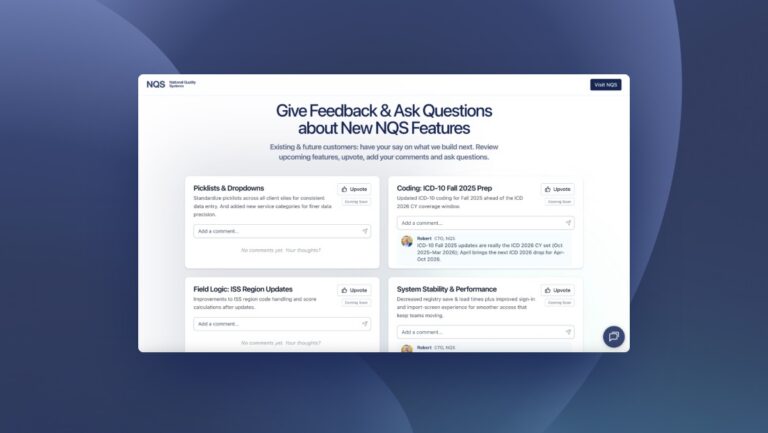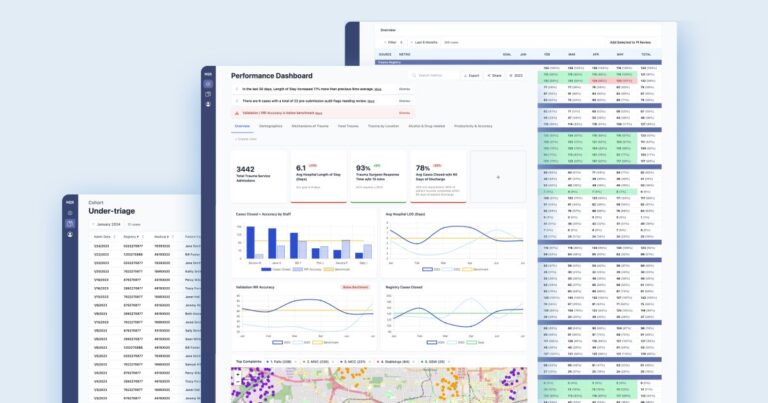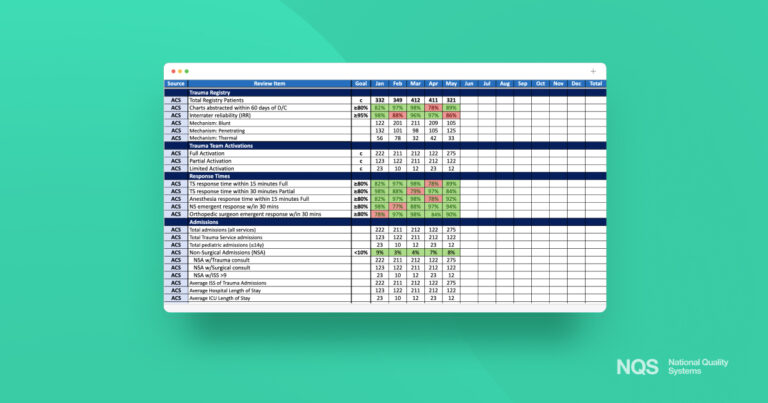
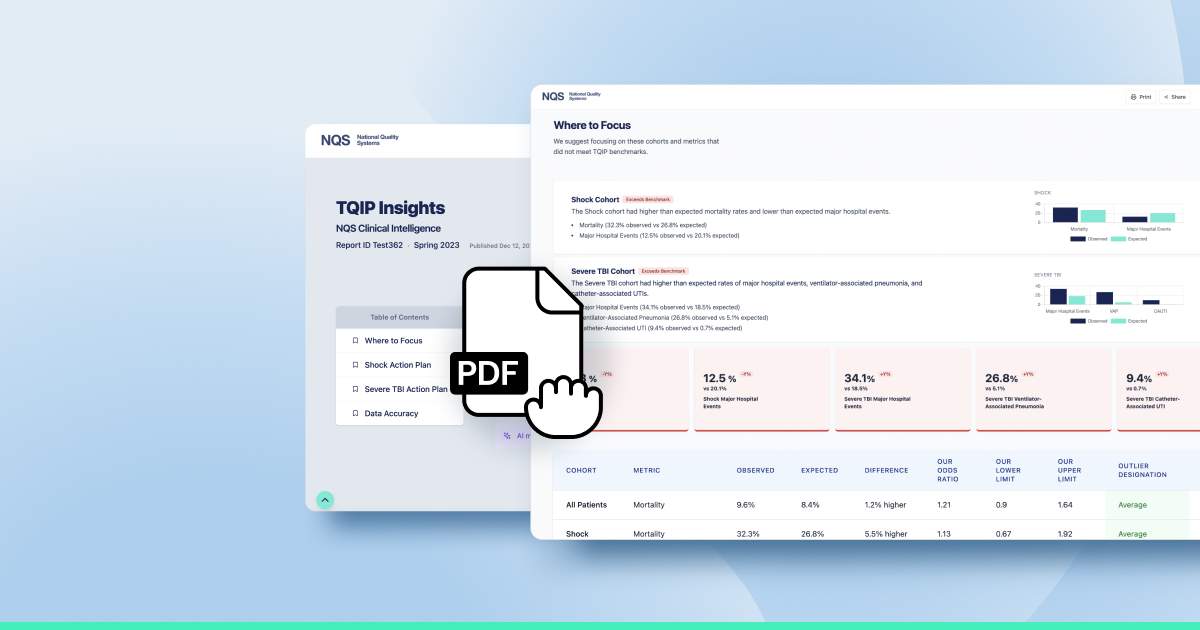
Wish TQIP reports were easier to read? Wish it was quicker for your trauma team to get insights that they could act on?
How can AI help your trauma team get more insights from your TQIP report, in less time?
Let’s find out.
TQIP AI demo video
Have a look at this video to find out more:
Yes, AI has its limitations
But first, let’s state the obvious. AI can’t replace experienced Trauma Program Managers, Registrars, and PI Coordinators who’ve built up their knowledge over years of working in trauma centers.
But AI can ASSIST – empower, even – busy trauma teams, helping them do their jobs better.
One such area: uncovering performance insights from your TQIP reports.
How to read TQIP reports?
The American College of Surgeon’s Trauma Quality Improvement Program, TQIP is a fantastic tool for trauma program performance improvement.
The TQIP report is a detailed document that provides comprehensive analysis and benchmarks for trauma centers, helping them improve patient care and outcomes through data-driven insights.
And so reading TQIP reports effectively is key for performance improvement in trauma centers. TQIP reports are designed to provide feedback on clinical outcomes and processes, helping trauma centers to identify areas for improvement.
But pulling insights out of the lengthy pdf report takes time and experience to get the most out of it.
TQIP reports are often comprehensive, spanning dozens of pages. Important data needing significant attention may be intermixed with less critical information. This can make it challenging to quickly identify key areas for improvement.
And the journey doesn’t end with understanding the report. Your team then needs to turn any gathered insights into meaningful actions.
Can AI help?
What if we could simply upload our TQIP pdf reports to a secure account and automatically see:
→ Which cohorts and measurements to focus on
→ Customized action plans for how to improve those areas
→ Specific information from those suggested references to help you implement those action plans
NQS’s TQIP Insights tool does just that.

How does it work?
Drag and drop your TQIP pdf into your free, secure NQS account. Once processed, the resulting insights report is grouped into “Where to Focus” and “Action Plans” sections.
1. Where To Focus
TQIP reports can be dense with a lot of information – important and otherwise – all vying for your attention.
With the NQS AI Insights tool, you quickly see the cohorts & measurements that deserve your consideration. And you see them in easy-to-understand, natural language and data visualizations.
For example, you might see in plain English and data graphs that the shock and severe TBI cohorts should be reviewed further. Specifically, you might how those cohorts’ Mortality, Major Hospital Events, Ventilator-Associated Pneumonia, and Catheter-Associated UTIs are not performing as well at your trauma center as compared to the benchmark of other centers.
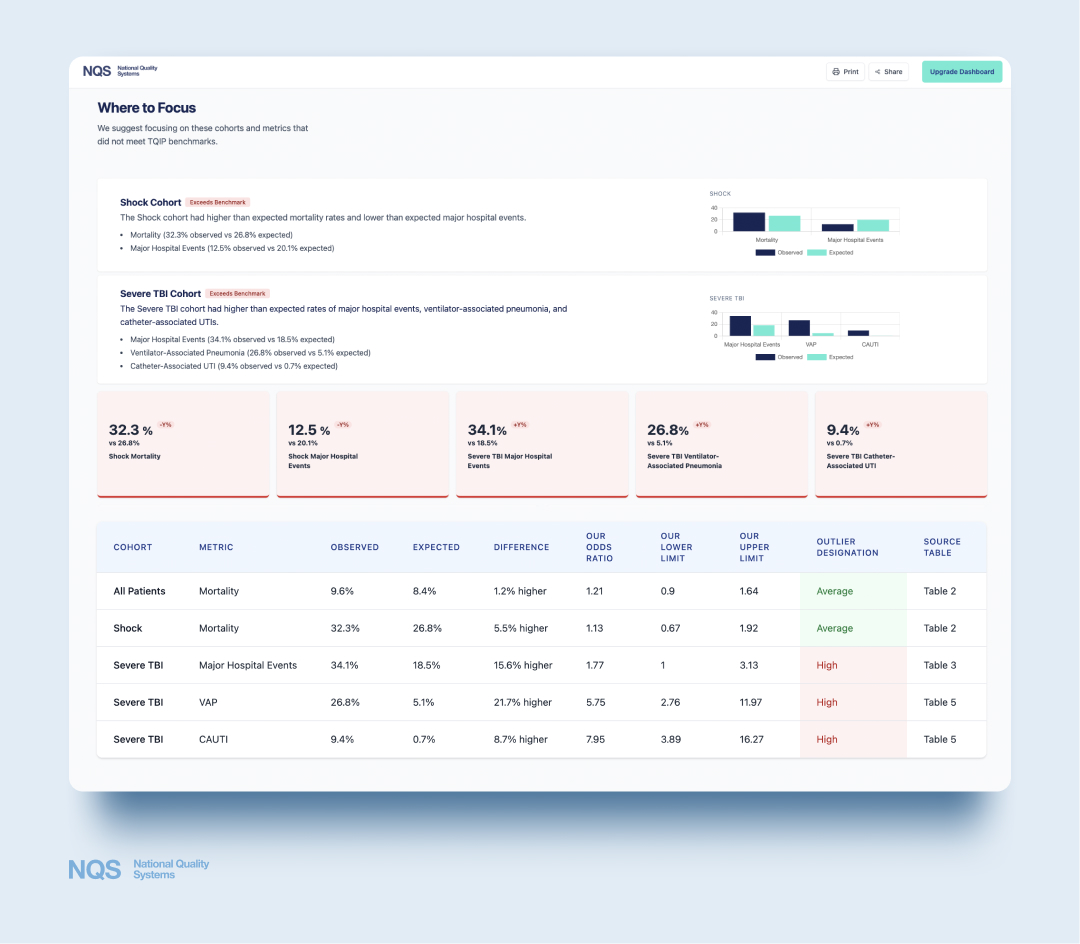
You can also view all of these important cohorts and metrics in a single, easy-to-scan table. In the attached image, see that our Severe TBI cohort experienced nearly 22% higher Ventilator-Associated Pneumonia versus the expected benchmark. And if we wanted to see more information about this, we see that we can go to Table 5 in our TQIP report.
2. Cohort Action Plans
When it’s time for your team to consider which actions might lead to improvements, it’s time for an action plan.
What do the guidelines suggest for these specific issues?
If this information is not readily familiar to you and your team, tracking down the appropriate information may take some time and involve multiple sources.
AI can help here as well. It is possible for AI to suggest an action plan for every one of your cohort and associated measurements that exceeded benchmarks. These action plans highlight relevant sections of guidelines – such as ATLS, East, Journal of Trauma and Acute Care Surgery, ACS’s Committee on Trauma, and other trusted sources.
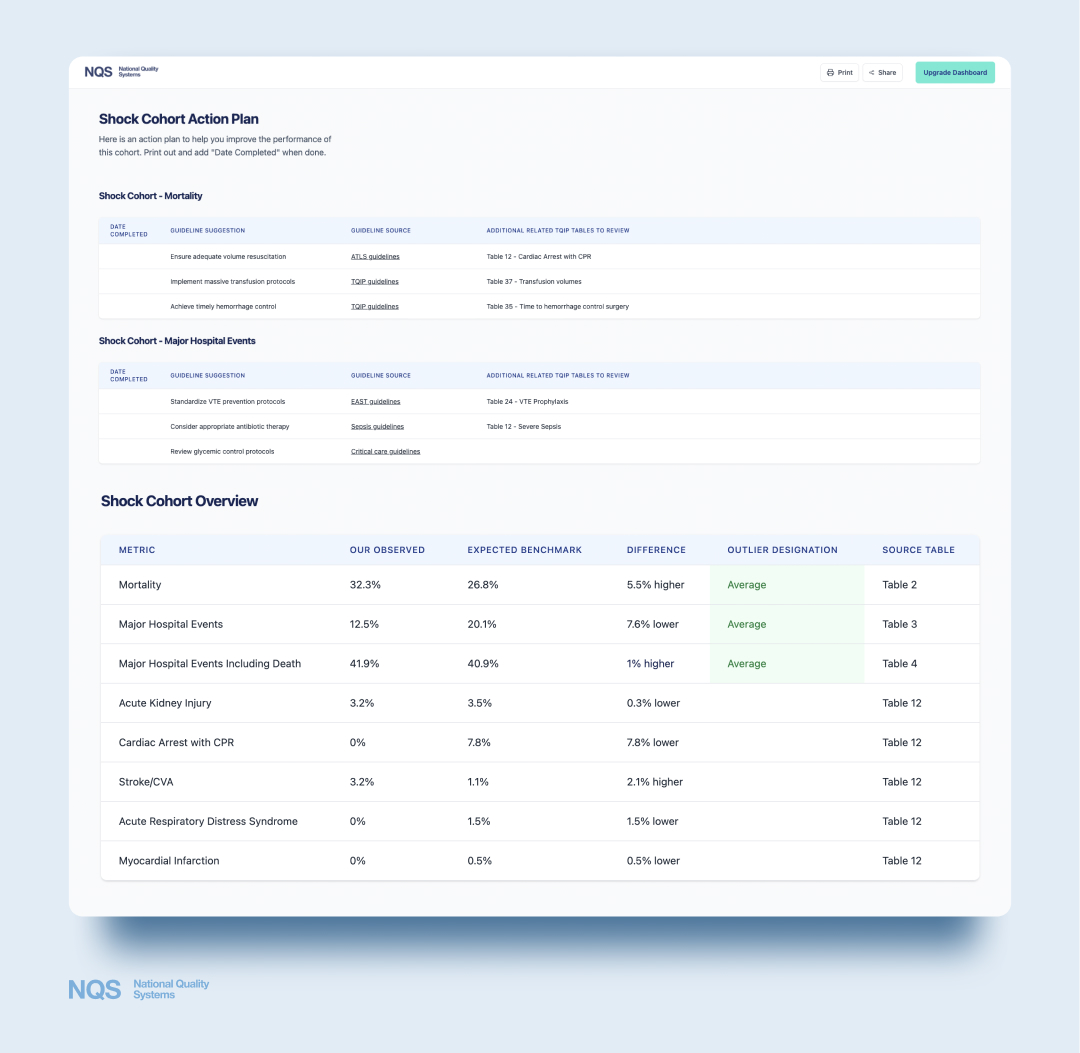
But not all usefulness needs to be high-tech! If you like, you can print out these action plans and when your team has completed the suggested protocol reviews or other guideline suggestions, you can write in the “Date Completed” for your records.
3. Guideline Guidance
One of AI’s strengths is surfacing relevant information. If you’d like more guidance, you can review more specifics from the related guidelines.
For example, for our Shock Cohort Mortality cases, you see a summary of what the ATLS guidelines say about ensuring adequate volume resuscitation in the context of shock.
Are there processes here that we need to review? Or other, related guidelines we should consider?
Conclusion
So, yes, AI can help trauma professionals see their TQIP reports from new angles. It can be like having an extra set of eyes, sifting through the data to help spotlight what deserves your team’s further considerations.
It shouldn’t replace the TQIP report or your invaluable team’s judgement. It should support them. To empower their expertise, adding additional tools to their toolkit for a deeper and more comprehensive approach to quality improvement.
Demo our flagship NQS trauma platform for more ways to simplify trauma data management.


